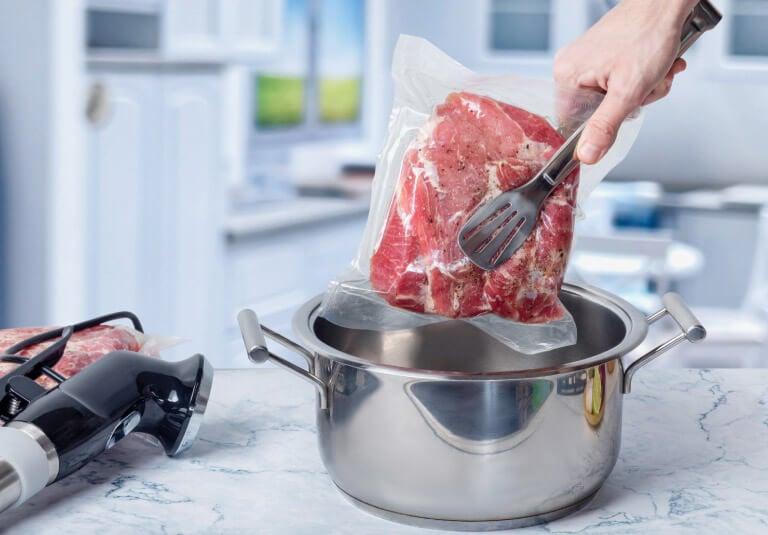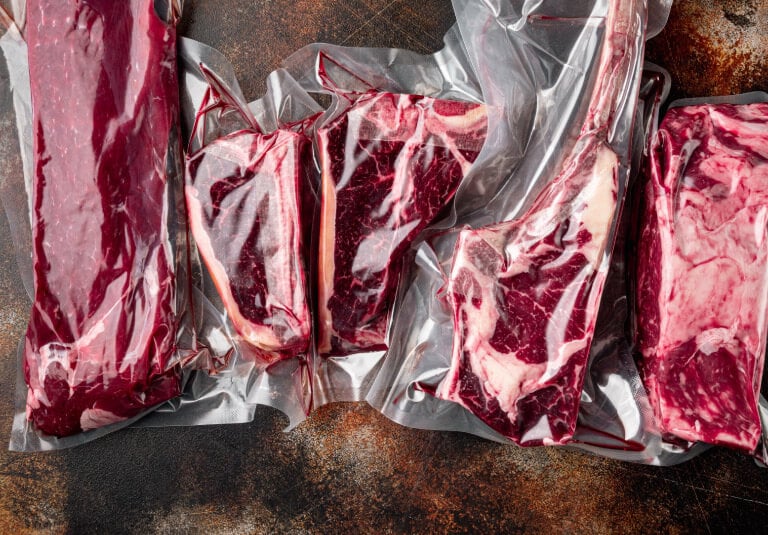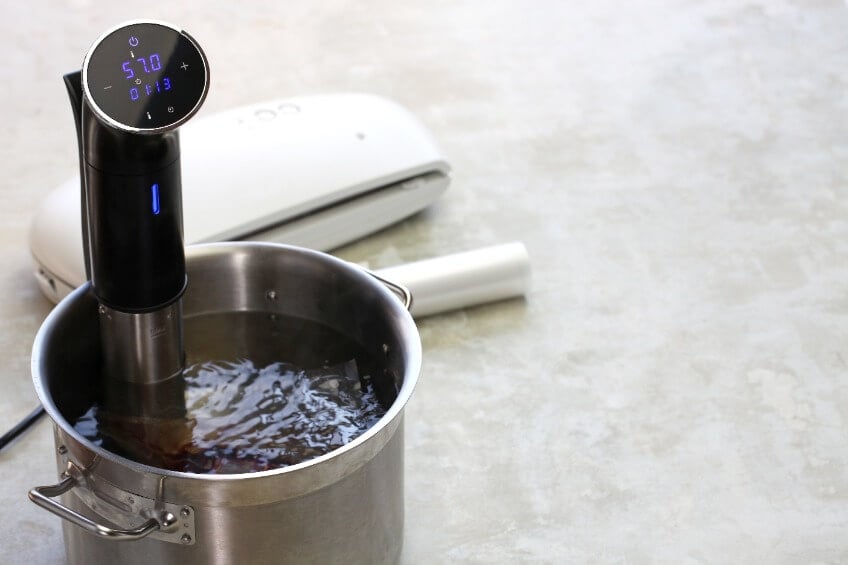Sous Vide Cooking Technique Explained

Table of Contents for this Sous Vide Cooking Article
Sous Vide Cooking Overview
Sous vide is a French term which is translated as “under vacuum”. It has become the latest cooking technique to take enthusiastic home cooks by storm. Until recently, it was a well-kept secret among chefs around the world. The sous vide technique involves food being vacuum-sealed in special food-grade bags, which are then submerged in a water oven. The water is controlled to extremely precise temperatures, preventing the food from becoming overcooked, to deliver consistent results.
The sous vide cooking technique involves vacuum sealed food cooking in a hot water bath that precisely controls temperature.
Sous Vide Video
In this sous vide cooking video, Chef Dan is in our test kitchen and goes over how to set up your water oven and vacuum seal your product. Click on the video below to learn more about sous vide cooking:
What Are Sous Vide Cooking Times?
Red Meat (Filet Mignong): 55° C – 131° F / 2 to 3 hours. For a medium rare.
Red Meat (Short ribs): 79° C – 175° F / 12 to 24 hours. For a well cooked and tender piece of meat.
Red Meat (Pastrami): 63° C – 145° F for 36 to 48 hours.
Fish: 45° C / 15 Minutes.
Lam: 68° C / 24 Hours or 82° C / 12 Hours
Eggs: 63° C / 55 Minutes.
Fish: 54° C / 40 Minutes.
Duck: 58° C / 40 Minutes.
Puree: 83° C / 2 Hours.
Vegetables: 83° C / 10 to 30 Minutes.
Pork Belly: 82° C / 12 hours
What are the benefits of Sous Vide Cooking Technique?

Vacuum Sealing Before Cooking Locks in Seasoning, Moisture and Juices.
The sous vide cooking method ensures perfectly-cooked, nutritious and impressive meals that are always perfectly cooked to the water temperature. Plus, due to your food being sealed in pouches, the nutritional benefits remain higher than conventional form of cooking rather than being allowed to evaporate. The juices remain locked in retaining flavor and moisture – making the need of adding fat or oil obsolete since the food is already so moist.
With sous vide cooking there. is no need to purchase expensive fine dining cuts of meat or fish since following the cooking times below will enable you to achieve a tender and flavorful dish to dine on.
Perhaps the biggest benefit to sous vide is that since the water is at a precise temperature, it will stay at the same level of ‘doneness’. For example. to cook a well done steak you just have to set the water temperature to the right setting and voilà!
What type of water oven is needed to implement the sous vide cooking technique?

Set Temperature on Probe and Place in Water.
Your water oven will come with its own set of manufacturer’s instructions. Follow those to set up your oven to manufacturer specifications and familiarize yourself with the sous vide water oven.
Sous Vide Cooking Vacuum Sealer
Sous vide cooking requires a vacuum sealer. Follow the manufacturer’s instructions for the vacuum sealer functions. Some vacuum sealers are table-top while other vacuum sealers have a large chamber and come on casters.
Sous Vide Cooking Pouches
Food-grade cooking pouches come as a roll with both ends open. You cut yourself a slice of the roll to make a tube, then seal one side and create your pouch. After you cut the roll to the desired size, vacuum seal the pouch.
Example of a Sous Vide Recipe
If you are looking for a quick and easy sous vide recipe you can make in your water oven take a look at this sous vide tri-tip cacciatore recipe: